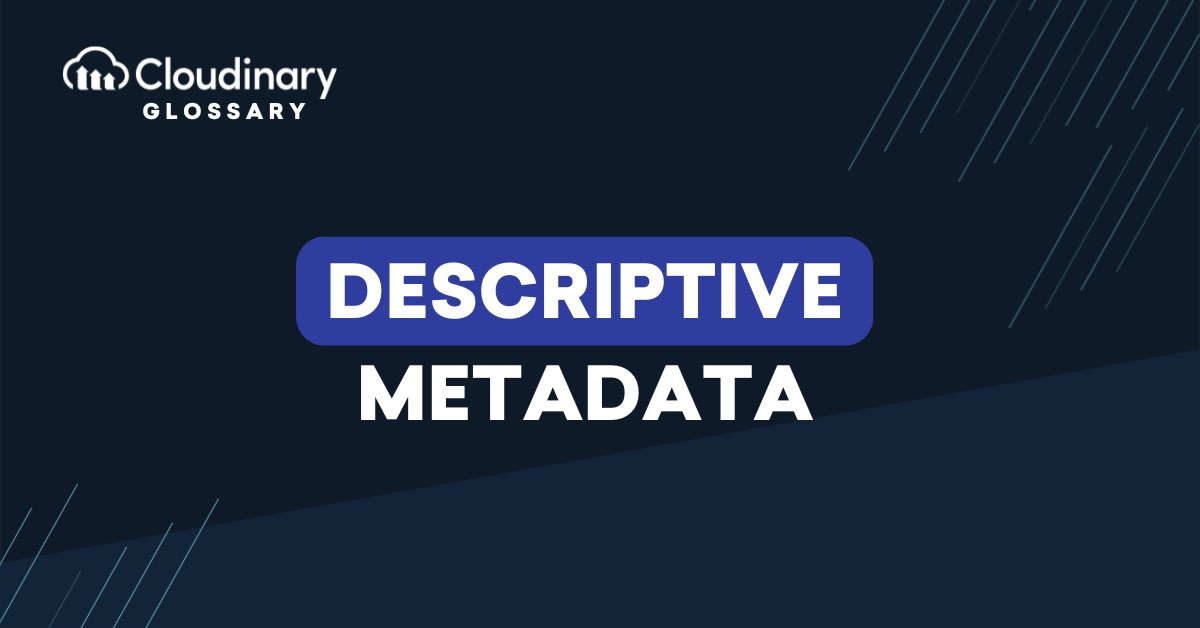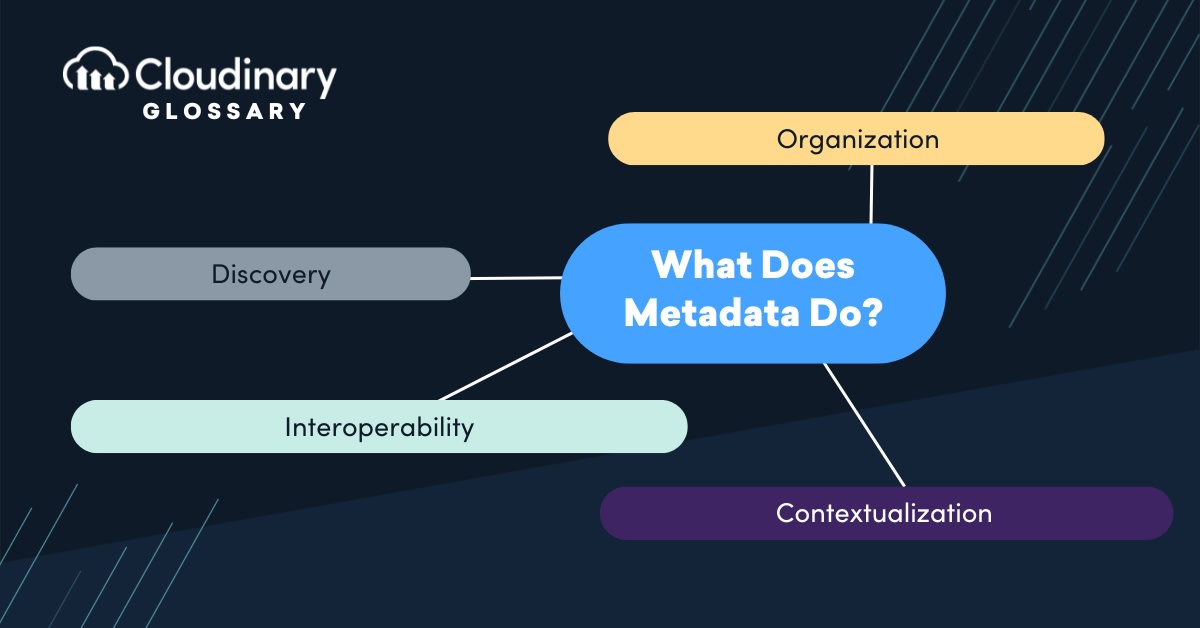
What Is Descriptive Metadata?
Descriptive metadata refers to the information that helps identify and describe resources so that they can be easily discovered and understood.
This type of metadata answers key questions about a resource, such as:
- What is this resource?
- Who created it?
- Where was it created?
- What is its subject or purpose?
For example, the descriptive metadata for a book might include its title, author, publisher, publication date, and summary of contents. Similarly, for a digital image, it might consist of its file name, caption, keywords, and the date it was captured.
Descriptive metadata is primarily concerned with making resources searchable and providing enough information for users to determine their relevance or significance.
What Does Metadata Do?
In general, metadata is the “data about data.” It provides the structured information necessary for organizing, managing, storing, and retrieving resources. Metadata serves these key functions:
Discovery
Metadata enables users to locate resources by providing searchable keywords and detailed descriptions. For instance, libraries use metadata to catalog books so patrons can easily find them.
Organization
By classifying and categorizing resources, metadata allows for structured storage and retrieval. Think about how music streaming platforms organize songs by artist, genre, or mood—this is all possible thanks to metadata.
Contextualization
Metadata adds context to resources, helping users understand what they are looking at. For example, without metadata, a photograph might simply be a random file, but with metadata, users can see who took the photo, when it was taken, and where.
Interoperability
Metadata aids in standardizing resource information, making it shareable between systems or platforms. For example, in digital archives, metadata ensures resources can be used across multiple applications.

Descriptive Metadata vs. Other Types of Metadata
Metadata comes in several different types beyond descriptive metadata, each serving different purposes. Below is a comparison:
Descriptive Metadata
- Purpose: Helps with resource discovery and identification.
- Examples: Titles, authors, keywords, captions, summaries, subject categories.
- Uses: Searching, retrieving, and making informed decisions about resources.
Structural Metadata
- Purpose: Describes the organization of a resource.
- Examples: Table of contents, page numbers, sections within documents.
- Uses: Navigating through resources, mapping relationships between parts of a resource.
Administrative Metadata
- Purpose: Handles resource management and technical information.
- Examples: File formats, creation date, access restrictions, copyright details.
- Uses: Managing storage, rights management, tracking creation and modification history.
Technical Metadata
- Purpose: Provides details related to the technical aspects of a resource.
- Examples: Resolution, color depth, compression type for images/video files.
- Uses: Ensuring compatibility with systems and applications.
While all types of metadata are essential for proper resource management, descriptive metadata is most user-focused and plays a key role in enhancing the searchability and presentation of resources.
Importance of Descriptive Metadata
Descriptive metadata is crucial for both individuals and organizations in managing and utilizing their resources efficiently.
Here are the reasons why it’s so important:
Improves Resource Management
Having descriptive metadata allows organizations to catalog and retrieve their resources easily. Without it, locating and identifying specific items in large collections would be extremely difficult.
Boosts Discovery
Search engines, databases, and digital platforms rely heavily on descriptive metadata. Metadata ensures that users can search for and find relevant content using keywords.
Facilitates Collaboration
When properly applied, descriptive metadata standardizes how resources are described. This ensures that resources can be shared and interpreted across different systems and platforms.
Enhances Accessibility
For certain industries, such as libraries, museums, and archives, descriptive metadata ensures knowledge and information remain accessible to users.
Drives Decision-Making
Descriptive metadata provides the context users need to assess whether a resource fits their needs. For example, scholars use metadata to determine whether a book or journal is relevant to their research.
Use Cases of Descriptive Metadata
Descriptive metadata has diverse applications across multiple fields. Below are some common use cases:
Libraries and Archives
Libraries depend heavily on descriptive metadata to catalog books, journals, and documents. Systems like MARC (Machine-Readable Cataloging) help ensure consistent metadata for organizing materials.
Museums
Museum databases use descriptive metadata to describe artifacts, including their creation date, artist, material, and cultural significance.
Digital Media Platforms
Streaming services rely on descriptive metadata to organize and recommend songs, movies, and TV shows. Metadata tags such as “genre,” “director,” or “year” help users find relevant content.
E-Commerce
Online retailers use metadata to categorize products, making them searchable by attributes like size, color, price range, and reviews.
Research and Education
Scientific databases and educational platforms use descriptive metadata to help students, teachers, and researchers find relevant articles, videos, or datasets.
Final Words
Descriptive metadata is an indispensable tool in the digital age, ensuring resources are discoverable, organized, and user-friendly. Its focus on describing the “content” of resources makes it particularly valuable for industries such as libraries, museums, e-commerce, and digital media. By differentiating itself from other types of metadata, descriptive metadata plays a unique and vital role in connecting users to relevant content and bridging the gap between raw data and meaningful information.


